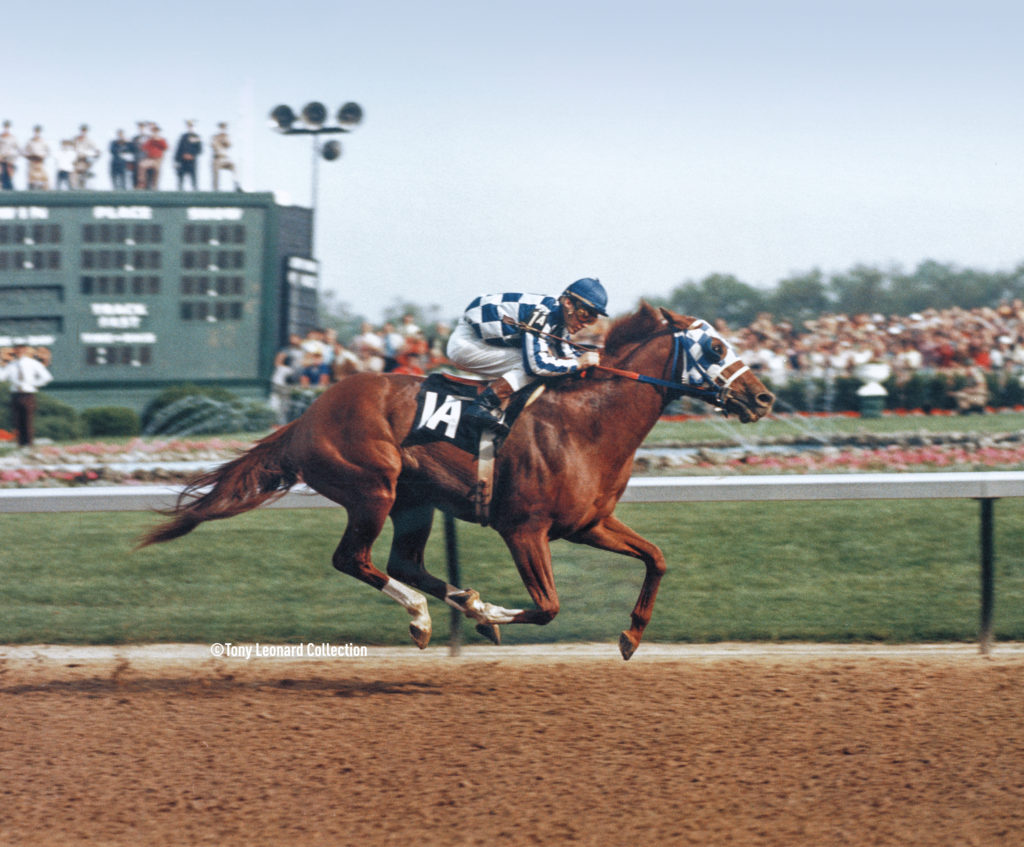
A half-century after winning the Triple Crown, America’s horse runs into history at the Kentucky Derby Museum.
Written by Jenn Thornton
No one who was at Belmont Park in 1973 for the 105th running of the Belmont Stakes would ever forget it: the seemingly effortless way the long-striding Secretariat bested five of the world’s best Thoroughbreds, including his rival Sham, to win the last and the most grueling of the Triple Crown races. It was a near mythical finish to an unforgettable Triple Crown season that anointed Secretariat the greatest racehorse of his generation, if not all of horseracing history.
In Hollywood, top-class honors goes to John Wayne’s beloved horse Dollor—the actor’s trusty mount in several films—but in the Sport of Kings, it was Secretariat, with his bred-for-stardom bloodlines, that was destined to reign supreme. Despite challenges to that title from the Triple Crown travelers that followed him—Seattle Slew (1977), Affirmed (1978), American Pharoah (2015), and Justify (2018)—you’d be hard pressed to find a horse that looms larger in the American imagination than the chestnut-colored colt they called “Big Red.”
In the ongoing “best horse of the 20th century” debate, only the mighty Man o’ War gives Secretariat a serious run for his money. Also nicknamed “Big Red” (and a distant cousin to Secretariat himself), Man o’ War has a glistening record of wins with one conspicuous absence: the 1920 Kentucky Derby. Kept off that card by his owner Samuel D. Riddle, Man ‘o War would go on to win the Preakness and Belmont Stakes, along with a series of other major stakes races. For many, Riddle’s decision to sideline his superhorse in the Run for the Roses gives Secretariat the title by a nose.
There is a lot of proof in that pudding. Twice named Horse of the Year, Secretariat was dominant back in the day. Explosive. More telling than his margins of victory are his record-setting runs. He set track records in all three Triple Crown races that still stand today. This includes, of course, that heart-pounding Belmont, which he ran in 2.24 seconds flat—a whopping 31 lengths ahead of the second-place finisher. It was a contest that stunned all those who saw it, not least because the Belmont is quicksand for closers. The longest of the Triple Crown races, it comes at the tail end of an arduous five-week span in the heat of June. Victors of the Belmont famously boast both speed and stamina and—especially true in Secretariat’s case—heart.
The “heart of the champion” theory only adds to Secretariat’s mystique. But there is something significant to it. When Secretariat died in 1989, the horse was discovered to have an unusually large heart, not only symbolically but literally—Secretariat’s ticker weighed 22 pounds, nearly three times the weight of an average Thoroughbred’s heart. But, as Kentucky Derby Museum’s recently unveiled state-of-the-art exhibit Secretariat: America’s Horse illustrates, Secretariat was far from an average horse. He was a sensation. Coinciding with the 50th anniversary of Secretariat’s exhilarating Derby win—the first leg of his Triple Crown triumph—the exhibit is a permanent and generous testament to the legacy of a true champion, bringing the memory of America’s horse and his incredible ride back to life.


